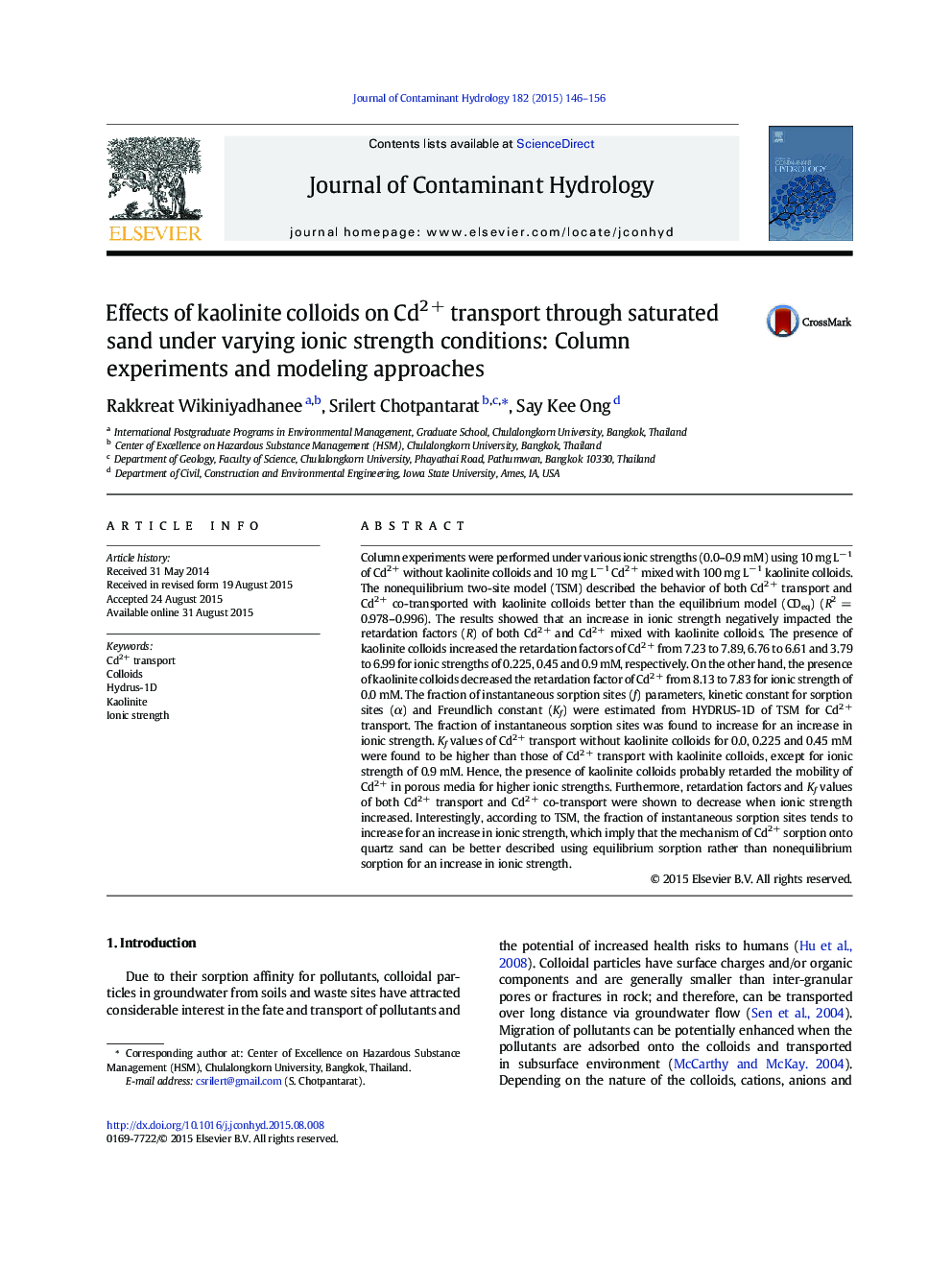| Article ID | Journal | Published Year | Pages | File Type |
|---|---|---|---|---|
| 6386424 | Journal of Contaminant Hydrology | 2015 | 11 Pages |
â¢We investigated the effect of kaolinite and IS on Cd2 + transport in sand aquiferâ¢The presence of kaolinite decreases the retardation factors of Cd2 + at low ISâ¢The two-site model well describes Cd2 + co-transported with kaoliniteâ¢Kaolinite colloids retard the mobility of Cd2 + in porous media for higher ISâ¢Sorption of Cd2 + (with kaolinite) appears to be more equilibrium as increasing in IS
Column experiments were performed under various ionic strengths (0.0-0.9 mM) using 10 mg Lâ 1 of Cd2 + without kaolinite colloids and 10 mg Lâ 1 Cd2 + mixed with 100 mg Lâ 1 kaolinite colloids. The nonequilibrium two-site model (TSM) described the behavior of both Cd2 + transport and Cd2 + co-transported with kaolinite colloids better than the equilibrium model (CDeq) (R2 = 0.978-0.996). The results showed that an increase in ionic strength negatively impacted the retardation factors (R) of both Cd2 + and Cd2 + mixed with kaolinite colloids. The presence of kaolinite colloids increased the retardation factors of Cd2 + from 7.23 to 7.89, 6.76 to 6.61 and 3.79 to 6.99 for ionic strengths of 0.225, 0.45 and 0.9 mM, respectively. On the other hand, the presence of kaolinite colloids decreased the retardation factor of Cd2 + from 8.13 to 7.83 for ionic strength of 0.0 mM. The fraction of instantaneous sorption sites (f) parameters, kinetic constant for sorption sites (α) and Freundlich constant (Kf) were estimated from HYDRUS-1D of TSM for Cd2 + transport. The fraction of instantaneous sorption sites was found to increase for an increase in ionic strength. Kf values of Cd2 + transport without kaolinite colloids for 0.0, 0.225 and 0.45 mM were found to be higher than those of Cd2 + transport with kaolinite colloids, except for ionic strength of 0.9 mM. Hence, the presence of kaolinite colloids probably retarded the mobility of Cd2 + in porous media for higher ionic strengths. Furthermore, retardation factors and Kf values of both Cd2 + transport and Cd2 + co-transport were shown to decrease when ionic strength increased. Interestingly, according to TSM, the fraction of instantaneous sorption sites tends to increase for an increase in ionic strength, which imply that the mechanism of Cd2 + sorption onto quartz sand can be better described using equilibrium sorption rather than nonequilibrium sorption for an increase in ionic strength.
